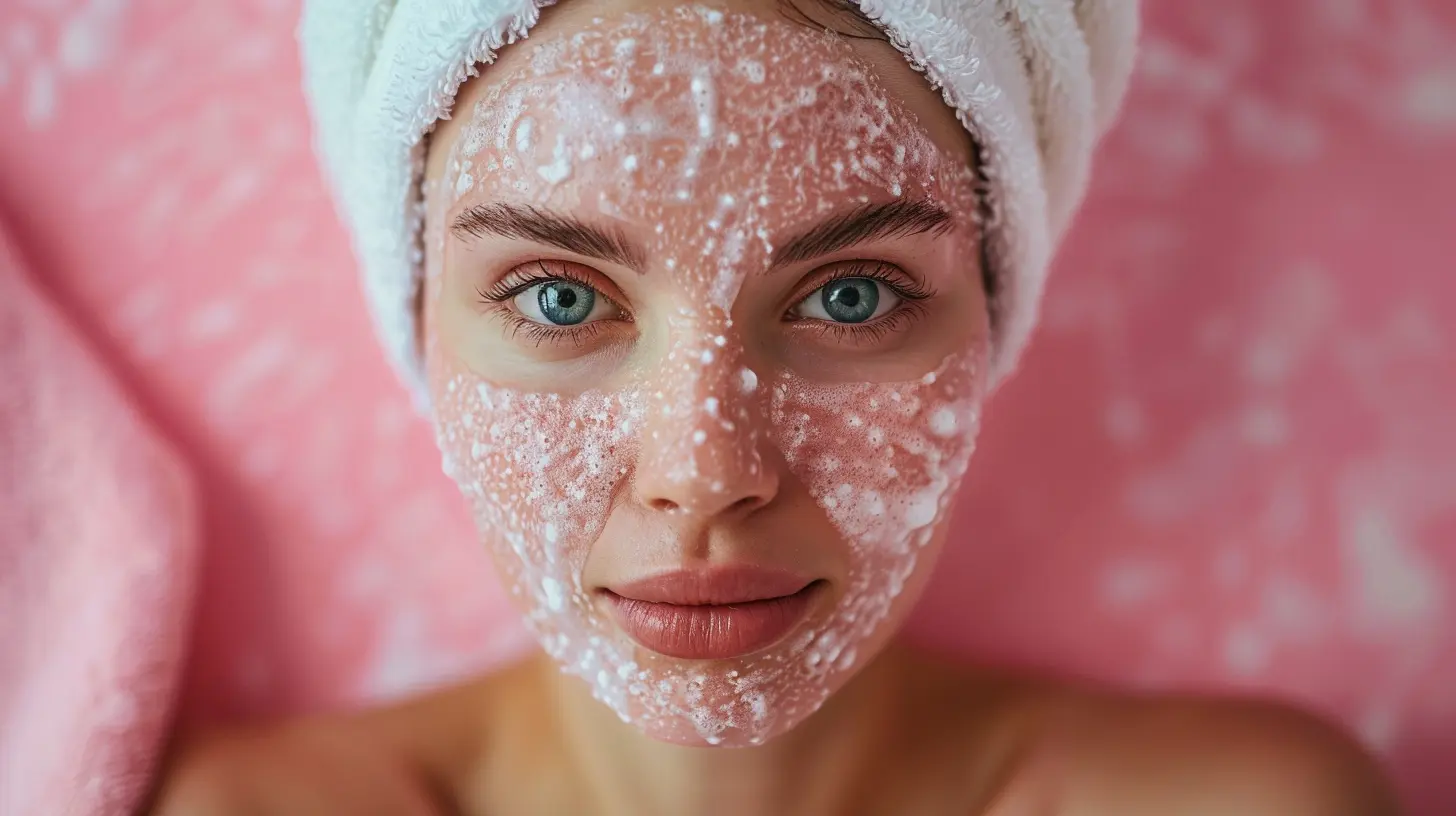The Importance of Proper Skincare After Exfoliating
3 November 2025
Ever feel like your skin’s just begging for a reset button? That’s exfoliation. It’s like a fresh start for your face—a way to slough off dead skin, unclog pores, and give your skin that glow-up we all crave. But here’s the catch: exfoliating is just half the story. What you do after exfoliating is what really sets the tone for healthy, glowing skin.
Neglect that post-exfoliation care, and you could end up with irritated, dry, or even damaged skin. So let's dive right into why proper skincare after exfoliating is absolutely essential, and how you can build a post-exfoliation ritual your skin will thank you for.
What Happens to Your Skin When You Exfoliate?
Exfoliation comes in two flavors: physical and chemical.- Physical exfoliation involves scrubbing your skin with grainy products or tools.
- Chemical exfoliation uses ingredients like AHAs, BHAs, or enzymes to dissolve dead skin cells.
Both types remove the outermost layer of your skin—technically known as the stratum corneum. This layer is made of dead skin cells that can make your skin look dull or feel rough when they pile up.
Now, here’s the thing: removing this layer leaves your fresh skin more exposed. Picture it like peeling an onion—each layer you remove reveals a more delicate one beneath. That new skin? It’s softer, more sensitive, and much more vulnerable to irritation, sun damage, and dehydration.
So if you just exfoliate and walk away—trust me, you’re doing it wrong.
Why Skincare After Exfoliating Matters So Much
After exfoliation, your skin is a blank canvas. It's clean, receptive, and ready to absorb nutrients. But it's also more prone to irritation, dryness, and even breakouts if not treated kindly. That’s why what you do next is crucial.Let’s break it down.
1. Your Skin Barrier Needs Support
The outer skin layer protects you from bacteria, environmental stressors, and moisture loss. Exfoliating, especially aggressively or too often, can temporarily weaken this barrier.Post-exfoliation care helps:
- Restore moisture
- Rebalance pH levels
- Soothe irritation
- Strengthen the skin’s defense layer
Think of it as giving your skin a hug after a tough workout—it just went through something, and it needs some TLC.
2. Hydration is Key
After exfoliation, your skin is like a sponge. It soaks up whatever you put on it much faster than usual. That’s great if you’re applying hydrating serums and moisturizers—but not so great if you expose it to pollution or harsh ingredients.Applying a rich, nourishing moisturizer right after exfoliating locks in hydration and keeps your skin smooth and plump. Bonus: it also minimizes the appearance of fine lines and keeps that post-exfoliation glow lasting longer.
Step-by-Step: The Ideal Post-Exfoliation Skincare Routine
So what exactly should you be doing after you exfoliate? Let's walk through a step-by-step routine that covers all the bases.Step 1: Rinse Thoroughly with Lukewarm Water
If you’re using a chemical exfoliant like glycolic or salicylic acid, it’s usually left on the skin. But physical scrubs or enzyme masks should be removed completely. Residue can be irritating, especially if left overnight.Avoid hot water—it strips your skin’s natural oils and can make post-exfoliation sensitivity worse. Lukewarm water is just right.
Step 2: Pat—Don’t Rub—Your Skin Dry
Your skin is in a delicate state, so be extra gentle. Use a soft towel and pat your skin dry. Rubbing can cause micro-abrasions or further irritation.Step 3: Apply a Hydrating Toner or Essence
Toners aren’t what they used to be. The right toner post-exfoliation should hydrate and soothe—not sting or strip. Look for alcohol-free formulas packed with ingredients like:- Hyaluronic acid
- Aloe vera
- Rose water
- Green tea extract
These help calm the skin and prep it for your next step.
Step 4: Use a Soothing Serum
Now is the time for your calming and hydrating serums. Skip anything with active treatments like retinol or high concentrations of vitamin C right after exfoliating—those can be too harsh.Instead, go for:
- Niacinamide (to soothe and strengthen the barrier)
- Hyaluronic acid (for hydration)
- Peptides (for repair)
- Panthenol (for calming)
These ingredients help reduce redness, inflammation, and dryness.
Step 5: Moisturize Like a Boss
Don’t skimp on moisturizer. Choose one that suits your skin type, but focus on formulations that nourish and repair.Look for ingredients like:
- Ceramides
- Shea butter
- Squalene
- Glycerin
- Dimethicone (for protecting the skin barrier)
Your skin doesn’t just want this moisture—it needs it to bounce back from exfoliation.
Step 6: Always Wear SPF (Even If You're Indoors)
This one’s non-negotiable. If there’s one time your skin is even more vulnerable to the sun, it’s after exfoliating. New skin = less natural protection.Even if you're not planning to leave the house, UV rays can sneak through windows. Use a broad-spectrum SPF of at least 30 to shield your skin from sunburn, dark spots, and premature aging.
Common Mistakes People Make After Exfoliating
We all want that glass-skin glow, but sometimes eagerness causes more harm than good. These are the pitfalls to avoid:🧪 Over-Treating Right After
Exfoliation is a treatment. Adding more strong actives like retinol, acids, or even essential oils right after can lead to irritation, peeling, or breakouts.Instead: Let your skin breathe and recover.
🧴 Skipping Moisturizer
Nope, oily skin is no excuse to skip hydration. In fact, oily skin can get oilier when it's dehydrated. Moisturize always—especially post-exfoliation.🧼 Exfoliating Too Often
Your skin isn’t a dirty dish that needs scrubbing every day. Over-exfoliating can thin your skin barrier and lead to sensitivity and breakouts.Stick to:
- 1–2x per week for sensitive or dry skin
- 2–3x per week for normal or oily skin
Skin should feel smooth, not raw.
Tailoring Post-Exfoliation Care to Your Skin Type
Great skincare isn’t one-size-fits-all. Here's how to tweak your post-exfoliation care depending on what your skin’s like:For Dry Skin
- Use thick, occlusive moisturizers- Add a facial oil like jojoba or argan
- Avoid harsh acids—stick to milder ones like lactic acid
For Oily/Acne-Prone Skin
- Lightweight gel moisturizers with niacinamide or tea tree oil can help balance oil- Don’t skip hydration—it keeps oil production in check
- Use salicylic acid sparingly and always follow up with SPF
For Sensitive Skin
- Go for fragrance-free, hypoallergenic products- Use oatmeal-based moisturizers or calming agents like calendula
- Limit exfoliation to once a week
The Long-Term Benefits of Proper Post-Exfoliation Care
You don’t need 10 steps or luxury products—just consistency and intention. When you nurture your skin right after exfoliating, you’re not just fixing today’s issues. You’re building stronger, more resilient skin over time.Here’s what you can expect long-term:
- Fewer breakouts
- Brighter, more even tone
- Reduced dullness and texture
- Slower signs of aging
- Better results from all your skincare products
Your skin becomes more receptive to good stuff and less reactive to bad stuff.
Skincare Is Self-Care
At the end of the day, skincare isn’t just about products—it’s an act of love. We exfoliate because we want brighter, happier skin. But without proper care afterward, it’s like washing your car and then leaving it out in a rainstorm.So next time you exfoliate, remember: your skin is whispering, “Please take care of me.” Give it what it needs—gentleness, hydration, and protection—and you’ll be rewarded with that fresh-faced, confident glow that turns heads and lifts spirits.
all images in this post were generated using AI tools
Category:
Skin CareAuthor:

Angelo McGillivray

